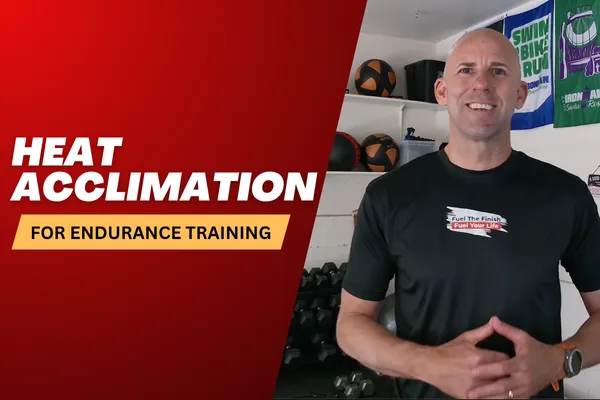
"I Shiver in 90 Degrees" — A Guide to Heat Training for Endurance Athletes
I used to joke with my clients back in San Diego: “I shiver in 90 degrees.”
It wasn’t really true, of course. But after years of training and racing in the brutal East County desert heat, where mid-day runs regularly climbed into the triple digits, my body adapted in a way that made 90°F feel… not too bad. Manageable. Almost normal.
It wasn’t magic. It was adaptation. And as endurance athletes, especially in the summer, adapting to the heat is one of the smartest things we can do to stay consistent, feel stronger, and perform at our best.
Let’s break down exactly how to train smart in the heat with three focus areas:
1. Hydrate Like It’s Part of Your Workout (Because It Is)
Heat and hydration go hand-in-hand, ignore one and the other will wreck your session. You don’t just hydrate during your workout. You need to start already hydrated.
What to Do:
Pre-Workout: Drink a full bottle (16–24 oz) of water with electrolytes about 30–60 minutes before training. This sets your baseline.
During Training: Aim for ¾ to a full bottle (16–24 oz) every hour. If it’s over 90 degrees or humid, lean toward the full bottle that includes electrolytes.
Post-Workout: Within 15 minutes of finishing, drink a glass of water, ideally with sodium or a recovery mix.
Daily: Think of hydration as a rolling habit. Don’t just recover for today, recover for tomorrow’s training.
Tip: If you start thirsty, you’re already behind. And recovery hydration is what sets you up for the next strong workout.
2. Don’t Avoid the Heat — Train In It (Progressively)
Training early morning or late at night to avoid the heat can feel like the smart move. But if your key races are going to be in the heat (which they probably are), your body needs to learn how to perform in it.
This is called heat acclimation. your body actually changes when you train consistently in the heat. It starts sweating earlier and more, on purpose, because it learns how to cool itself more efficiently. That sweat helps lower your skin temperature so you don’t overheat as fast. Inside, your blood volume increases, which means your heart doesn’t have to work as hard. It even triggers the production of more red blood cells, which boosts your oxygen delivery. These adaptations also help reduce how much sodium you lose, lower your heart rate during workouts, and reduce the burn (lactate buildup) during longer sessions. All of this adds up to a body that’s more durable, more efficient, and more prepared to handle tough, hot training days and race days.
Here is how you can acclimate to summer heat:
Begin with 2–3 sessions per week in the heat. Short workouts, 30–40 minutes max.
Slowly build volume over 2–3 weeks. Don’t increase intensity, just get used to being in the heat.
Watch your heart rate and RPE. Expect things to feel harder at first, that’s normal.
This is how I used to prepare for long summer runs and rides and races like Ironman 70.3 Silverman. The heat becomes less of a limiter and more of an environment your body understands.
3. Include Passive Heat Training
Here’s something most athletes overlook: You don’t have to do all your heat training while working out.
In fact, you can get many of the same benefits with “passive heat exposure”: saunas, hot tubs, or hot baths done after workouts or on easy days.
Easy Ways to Do It:
Post-workout sauna: 15-30 minutes, ideally within 10 minutes after you finish training.
Hot Tub or Hot Bath: Same deal—30–45 minutes after training.
Rest-day passive heat sessions: Do a sauna or bath without working out beforehand, but extend time to 45+ minutes.
This keeps your body in “heat adaptation mode” without piling on extra mechanical stress. Perfect during taper weeks, recovery phases, or when you’re traveling.
Tip: Heat exposure is still a stressor, so treat it like part of your training. Fuel, hydrate, and recover accordingly.
You Can’t Race in the Heat If You Avoid It
Training in the heat isn’t about suffering, it’s about preparing your body for the realities of your sport.
Whether it’s a July half-marathon, an August Ironman, or a muggy trail run in the middle of summer, heat is going to be there. Your job is to train your body to handle it, not avoid it.
With smart hydration, gradual exposure, and strategic use of heat tools like saunas and hot baths, you’ll not only survive summer training you’ll perform well in it.
And who knows... maybe one day you’ll be joking, “I shiver in 90 degrees.”
If you’re looking for customized guidance, hydration planning, or summer heat prep tailored to your race goals, let’s talk.


Facebook
Instagram
Youtube